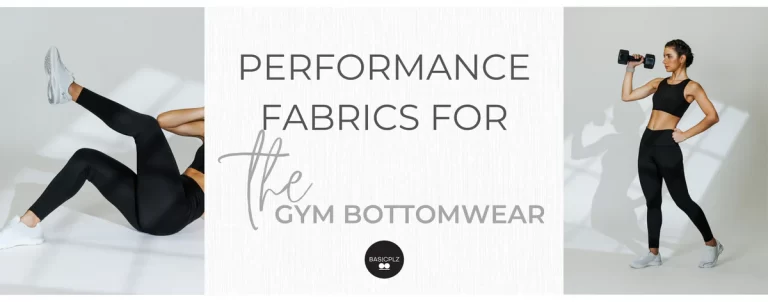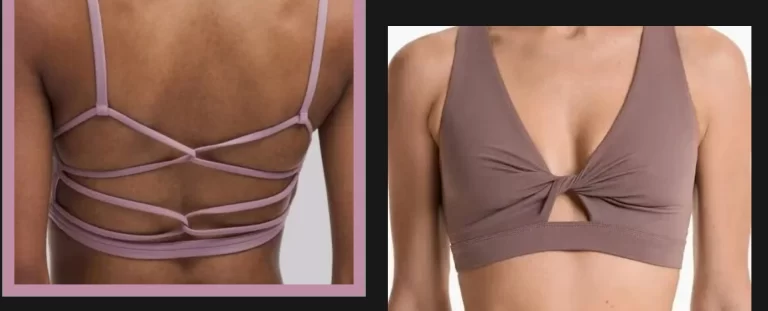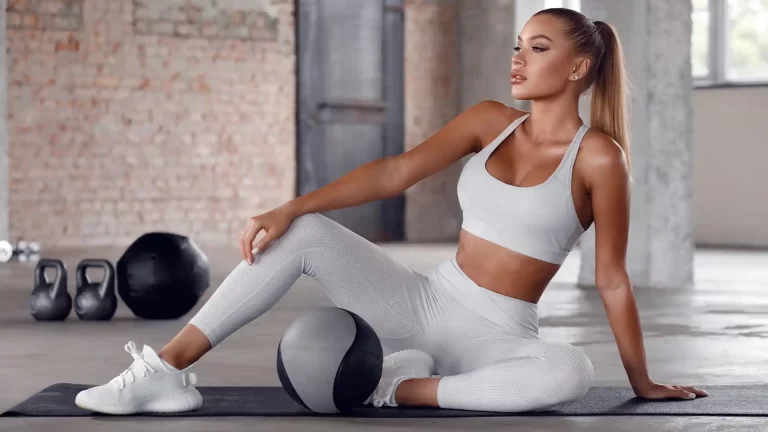Call Us At +86 17381572955
The Rising Demand for Customized Yoga Wear: A Comprehensive Guide
In recent years, yoga has become a global health trend, and as more people adopt this practice, the demand for yoga-related products has skyrocketed. Among these, customized yoga wear stands out as an emerging market, allowing brands and individuals to create personalized, functional, and stylish activewear. This article dives deep into the global yoga wear market, the customization process, supply chain management, and future trends.
1. Overview of the Yoga Wear Market
1.1 Market Size and Growth Trend
The global yoga wear market has been on a consistent growth trajectory, driven by increasing awareness of health and wellness. According to Fortune Business Insights, the global yoga wear market was valued at $27.63 billion in 2023, and it is projected to grow at a compound annual growth rate (CAGR) of 8.17% to reach $55.65 billion between 2024 and 2032.
Key drivers of this growth include:
• Rising health awareness: With more people engaging in fitness and mindfulness activities, yoga wear has become a staple in athleisure wardrobes.
• Increased demand for comfortable and functional clothing: Yoga enthusiasts prefer clothing that supports flexibility, breathability, and comfort during practice.
From a regional perspective, North America is currently the largest market, accounting for 41.6% of the global share, driven by the fitness culture and high spending power of consumers. The Asia-Pacific region, particularly India and China, is experiencing rapid growth, with the region expected to achieve a CAGR of 8.8% due to increased health awareness and government promotions of yoga.
1.2 Consumer Behavior and Preferences
The majority of consumers in the yoga wear market are women, who account for around 60.9% of global sales. Women are not only the primary buyers but also drive the market with a strong focus on self-expression, wellness, and lifestyle.
• Style preference: More than 60% of European and American consumers prefer slim-fitting yoga wear that offers both functionality and a fashionable appearance.
• Fabric choice: Seamless fabrics are highly favored due to their comfort and stretchability. Additionally, consumers look for fabrics that are breathable, moisture-wicking, and provide support.
• Functionality: Beyond aesthetics, yoga wear buyers prioritize features such as shock absorption, anti-exposure, and pocketed designs for practical use during workouts.
2. The Customization Process for Yoga Clothes
The rise of customization in yoga wear stems from consumers’ desire to express their individuality and meet specific functional needs. Here’s a breakdown of the customization process:
2.1 Design and Personalization Options
Customization starts with choosing the right design and personalization elements. According to market research, over 70% of consumers consider design and personalized features when purchasing yoga wear.
• Style choices: Custom yoga clothing ranges from fitted leggings to loose harem pants, sports bras to long-sleeved tops, allowing consumers to choose styles based on body shape and preferences.
• Color and pattern: Dark colors such as black and navy blue remain popular due to their slimming effect and resistance to stains. Personalized patterns, logos, and motivational text are common additions that offer unique branding opportunities for both individuals and businesses.
2.2 Material Selection and Performance Considerations
The fabric is crucial when customizing yoga wear, as it directly impacts the garment’s performance, comfort, and durability.
• Fabric qualities: Yoga wear fabrics should offer stretch, breathability, and quick-drying properties. Nylon and spandex blends are industry favorites due to their elasticity and durability.
• Moisture absorption: With yoga practices often involving intense physical activity, fabrics that wick away moisture are essential. Consumers are more likely to choose garments with moisture-wicking capabilities, which influences over 80% of purchasing decisions.
• Sustainable materials: The growing demand for eco-friendly yoga wear has led to increased use of organic cotton, bamboo, and recycled polyester in customization options. As consumers become more environmentally conscious, these sustainable fabrics are becoming the new trend.
3. Supply Chain Management in Customized Yoga Wear
Managing the supply chain efficiently is critical to the success of customized yoga wear. From selecting manufacturers to ensuring quality control, the entire process must align with brand values and customer expectations.
3.1 Manufacturer Selection Criteria
When choosing a manufacturer for custom yoga wear, global buyers must consider various factors to ensure quality and efficiency:
• Production capacity: Manufacturers should be able to handle large orders while maintaining high standards.
• Technical expertise: Manufacturers need to possess advanced technology to create high-quality yoga wear.
• Sustainable materials: In response to the rising demand for eco-friendly products, it’s essential to work with manufacturers who provide sustainable materials.
• Certifications and compliance: Manufacturers should hold relevant certifications like BSCI and ISO to ensure compliance with international standards.
3.2 Quality Control and Compliance
Quality control is an integral part of the production process to ensure that the final product meets expectations:
• Raw material inspection: Checking all raw materials before production guarantees that the fabric and components meet the required standards.
• Production process monitoring: Regular inspections during production help prevent defects.
• Finished product inspection: A thorough examination of the final product ensures that the garment meets design and functionality specifications.
• Compliance testing: Ensuring that yoga wear complies with international regulations, such as CPSIA or OEKO-TEX, helps prevent legal issues and enhances brand trust.
4. Global Yoga Wear Market Analysis
4.1 Regional Market Overview
The yoga wear market has witnessed impressive growth across regions:
• North America: The largest yoga wear market due to its established fitness culture and consumers’ focus on health and wellness.
• Europe: Markets in countries like Germany, France, and the UK are rapidly growing as yoga becomes more mainstream.
• Asia-Pacific: Yoga’s growing popularity, especially in India and China, is driving regional demand for high-quality yoga wear.
4.2 Leading Brands and Market Share
Several key players dominate the yoga wear market:
• Lululemon Athletica: A leader in high-end yoga wear, known for its premium fabrics and innovative designs.
• Nike and Adidas: These sportswear giants have successfully expanded their product lines to include yoga-specific activewear.
• Alo Yoga and Manduka: Emerging brands that have gained popularity through social media and influencer partnerships.
5. Market Opportunities and Challenges
5.1 Growth Drivers
Several factors contribute to the growth of the custom yoga wear market:
• Health consciousness: The global emphasis on physical and mental well-being is pushing the demand for yoga and fitness-related products.
• Social media: Influencers and fitness enthusiasts on platforms like Instagram have fueled the popularity of stylish yoga wear.
• Technological innovation: The development of online customization platforms and virtual fitting rooms makes personalized yoga wear more accessible.
5.2 Potential Risks and Countermeasures
While the yoga wear market presents significant opportunities, it also faces potential risks:
• Increasing competition: As more brands enter the market, differentiation becomes crucial.
• Changing consumer preferences: Staying in tune with shifting trends is essential for continued success.
• Supply chain disruptions: Diversifying suppliers and developing contingency plans can help mitigate risks caused by global supply chain issues.
6. Future Trends in Customized Yoga Wear
6.1 Technological Innovations
Innovation is driving the future of the custom yoga wear industry, with several emerging trends poised to transform the market:
• 3D Printing Technology: As 3D printing advances, brands can offer more precise, custom-fit yoga wear tailored to individual body measurements. According to IDC, the 3D printing market is expected to reach $32.7 billion by 2025, making it a potential game-changer for personalized clothing.
• Smart Fabrics: Integrating sensors and microelectronics into yoga wear allows practitioners to monitor their physiological data, such as heart rate and body temperature. The global smart textiles market is projected to grow at a CAGR of 22.7%, making this a major trend for high-performance activewear.
• Eco-Friendly Materials: With rising demand for sustainable products, materials like organic cotton, bamboo fibers, and recycled polyester are gaining popularity. The global sustainable textiles market is set to grow at a CAGR of 6.5%, as consumers increasingly prioritize environmentally friendly clothing.
• Nanotechnology: Innovations in nanotechnology are improving the durability, water resistance, and breathability of yoga wear. This technology is expected to grow in popularity due to its ability to enhance fabric performance without sacrificing comfort.
6.2 Personalized Customization and Digital Experiences
Personalization will be at the forefront of the future yoga wear market, with consumers expecting unique products tailored to their preferences. The rise of online customization platforms and virtual reality (VR) fitting rooms will make the buying experience more interactive and personalized. According to Forrester Research, personalized experiences can increase customer loyalty by up to 10%.
Additionally, the use of health-focused fabrics that incorporate antibacterial or soothing elements will align with the growing health and wellness trend, further boosting demand for custom yoga wear.
Conclusion: Embracing the Future of Customized Yoga Wear
The global yoga wear market is evolving, driven by increasing health awareness, technological innovations, and consumer demand for personalized products. Brands that focus on creating high-quality, sustainable, and customizable yoga wear will stand out in this highly competitive market.
At CozyActive, we specialize in creating custom yoga wear that aligns with the latest market trends. By offering personalized designs, high-performance fabrics, and sustainable materials, we help brands meet the growing demand for ethical, functional, and fashionable yoga clothing. As the yoga wear market continues to grow, embracing these trends will ensure long-term success and consumer loyalty.



